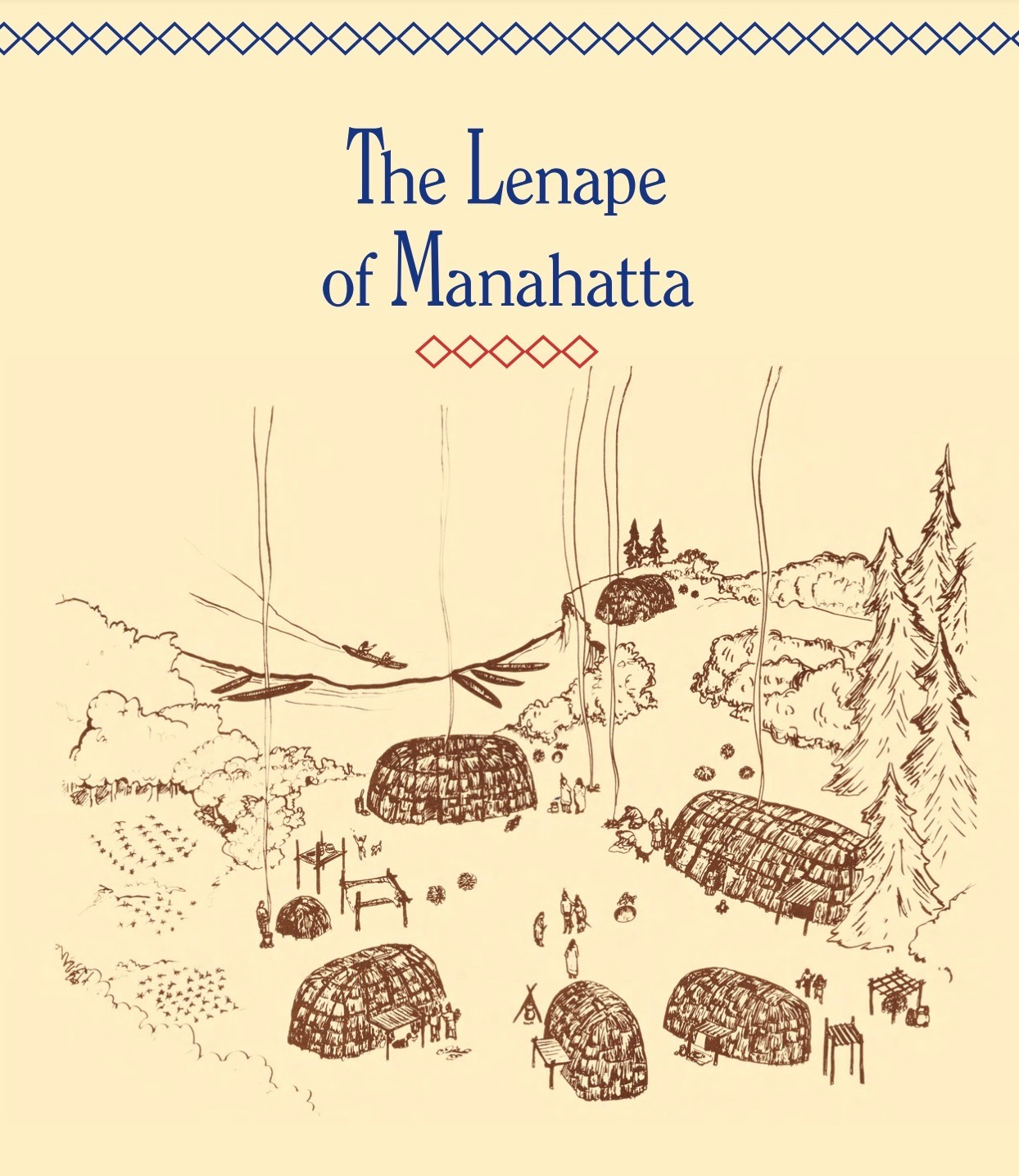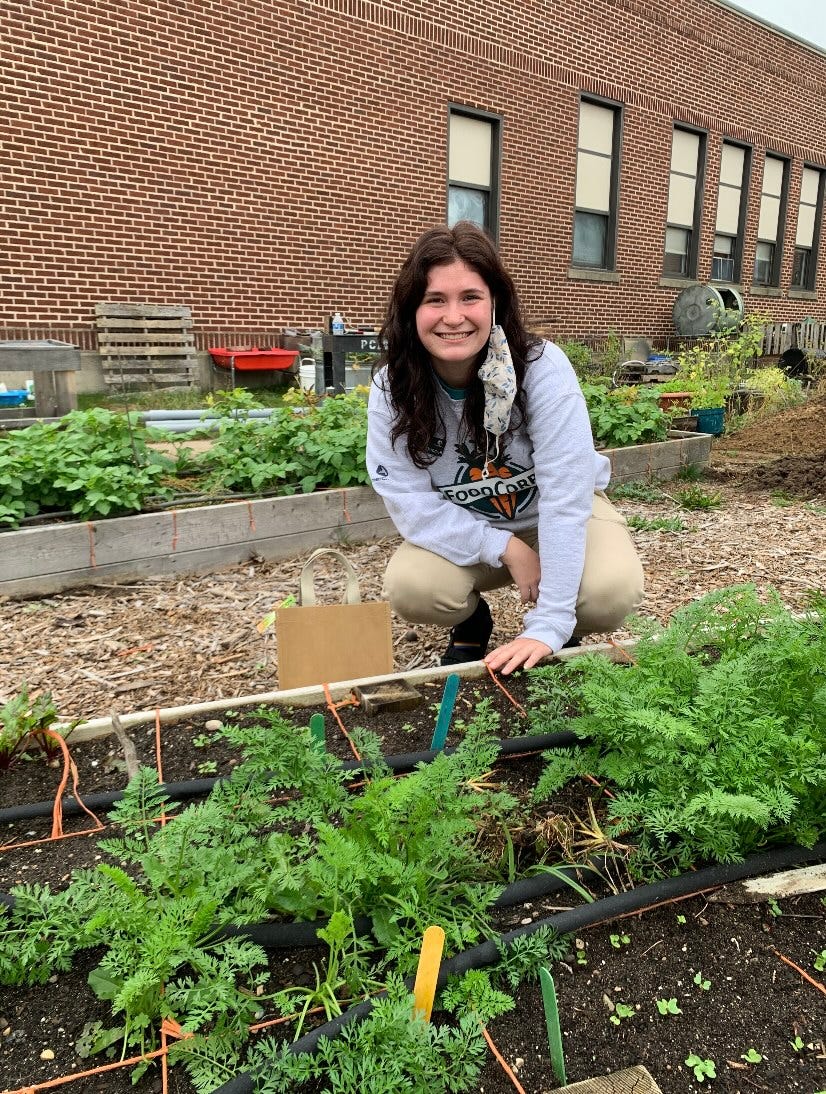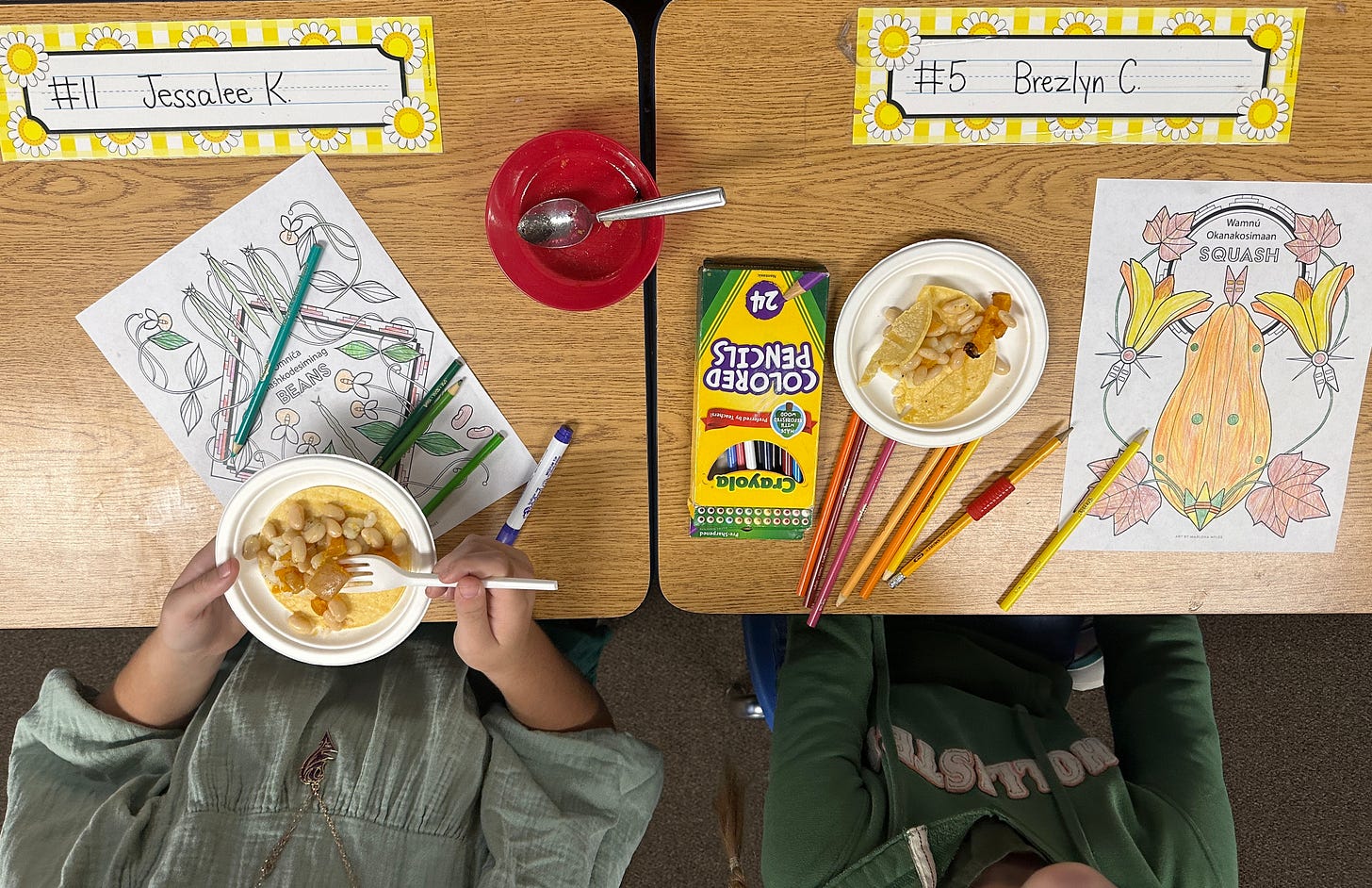It's time to decolonize your Thanksgiving.
How to honor Indigenous people and foods at this year's table.
Thanksgiving has changed a lot since I was a kid. In the 70s, I learned about the friendly Pilgrims sharing a meal with the Indians at a long table. It was very white-washed. My children are learning about oppression and colonization, white privilege and cultural appropriation, the stolen land of Native American and their long-erased foods and traditions. Thankfully, times change.

This year, I wanted to find a way to celebrate indigenous people, to decolonize some of the food eaten during the holidays, and to reclaim food traditions that colonialism erased. What better way than to chat with a teacher from FoodCorps, a nonprofit that partners with schools and communities to nourish kids’ health, education, and sense of belonging, and to showcase culturally relevant food in schools.
I spoke to Michigan-based service member Lauren Driscoll (Ren) who works with the Little Traverse Bay Bands of Odawa Indians and other Indigenous communities to create hands-on food lessons for students, many of whom have Native roots. Ren teaches her students about decolonized diets and what the term colonized means, particularly around Thanksgiving.
Scroll down to the end of our conversation for a recipe for Three Sisters Quesadillas, a dish that incorporates corn, beans, and squash, traditional in Native American agriculture and nutrition.
How did you get involved in teaching about indigenous foods and the concept of decolonizing Thanksgiving?
I grew up in Michigan on native land but had no idea about that history until I was in college. When I finally learned that the land I had been living on for my entire life was Native land, I was appalled and I changed majors to work in the intersection of culture, community, and food.
Tell me a little about your work in FoodCorps.
I always strive for equity and to stop oppression in all its forms. For me, this looks like educating students, schools and our communities about the land we’re on, the food that’s grown on that land, and the people that have been stewarding that land for millennia. Part of my work in my communities is to indigenize our food, and decolonize the systems we work and live in; to embrace our responsibility in shifting power to Native folks and communities, foodways, and our food and educational systems.
When we teach culturally-appropriate Indigenous education, we work with our local tribe, The Little Traverse Bay Band of Odawa Indians, specifically with their curriculum specialist, Amanda Weinert. That way the history, culture, and information is from local, Indigenous sources, peoples and history, rather than from the perspective of someone non-native.
How can we do that for our own kids and communities?
An easy way to begin to do that is to indigenize and decolonize your plates, to eat foods that are grown in your area, buy local as much as possible, purchase from Indigenous producers, make recipes from Indigenous chefs and peoples, and research the history and meaning of the food you eat. Our bodies, the land, and our communities will thank us.
Think about the Native history and think about the land you are living on. What is the history of the food you are eating? Many Thanksgiving foods like cranberries, turkey, and corn, are indigenous foods that have history. Where does it come from and why are we celebrating together and why are we spending this time together?
In Michigan, for instance we focus on the Anishinaabek and the Three Fires Confederacy of Odawa, Ojibwe, Potawatomi. We talk about the history of this land, and the foods they have eaten for so long. We talk about Thanksgiving and recognize the Wampagnog people in Massachusetts and the history there. We talk about why some native people might not want to celebrate thanksgiving, but they might celebrate to celebrate their survival.
In New York City, families can learn about the Lenape, who lived on the land that is now Manhattan. And everyone can make Three Sisters tacos together! It’s an easy cooking project that allows you to talk about decolonizing your meals, and use ingredients that have been grown by indigenous people.
What do you hope that more folks can talk about or integrate into their Thanksgiving celebrations?
There’s a lot of violence that was done to Natives, and it’s important to recognize that, but we can also give thanks to the Natives because when you think about it, the survival of America is based on their kindness. The colonist’s crops were failing, people were starving until the Native folks taught them to farm and live off the land. We can recognize the kindness of native folks and that directly led to the survival of America, to all of us.
Is there a book or a reading that you’d recommend sharing with your kids before the meal?
You can read books by Indigenous authors, support Native-owned businesses, and listen to Native music. For younger kids, I highly recommend “Keepunumuk: Weeâchumun's Thanksgiving Story” by Danielle Greendeer, which is written by a Wampanoag woman. As a family, you can read the Haudenosaunee Thanksgiving Address Greetings to the Natural World. The book Braiding Sweetgrass for Young Adults by Robin Wall Kimmerer/Monique Gray Smith has an amazing section on Thanksgiving, and is accessible for all ages of readers.
Anything else folks should know?
If anyone in New York (or elsewhere) wants to get connected with FoodCorps to help support similar efforts around culturally relevant food they can get in touch and become a FoodCorps service member or bring FoodCorps to their classroom!
General FoodCorps service member application page
New York FoodCorps contacts:
PARTNERSHIP- hayley.klein@foodcorps.org
SERVICE MEMBER INFO- javonne.alonzo@foodcorps.org
Three Sisters Quesadillas
Makes 7-8 servings
Ingredients:
1 can black beans, rinsed and drained
1 cup corn kernels, fresh or frozen
1 cup butternut squash (chopped)
¼ cup fresh cilantro, minced
3 cloves garlic, minced
¼ onion, chopped
2 cups Monterey Jack cheese, shredded
Directions:
1. Preheat the oven to 350F.
2. Coat squash with garlic, onion and olive oil. Roast until soft. Let cool.
3. Once cooled, mash squash mixture until smooth.
4. In a separate bowl add beans, corn, salt, pepper, cilantro, chili powder, cumin and lime juice. Mix well.
5. Spread olive oil on one side of each tortilla.
6. Oiled side down, spread mashed squash onto one side of the tortilla.
7. Add bean mixture, then shredded cheese on top. Repeat with remaining mixtures and cheese.
8. Fold tortillas in half and bake for 10 minutes or until brown.



